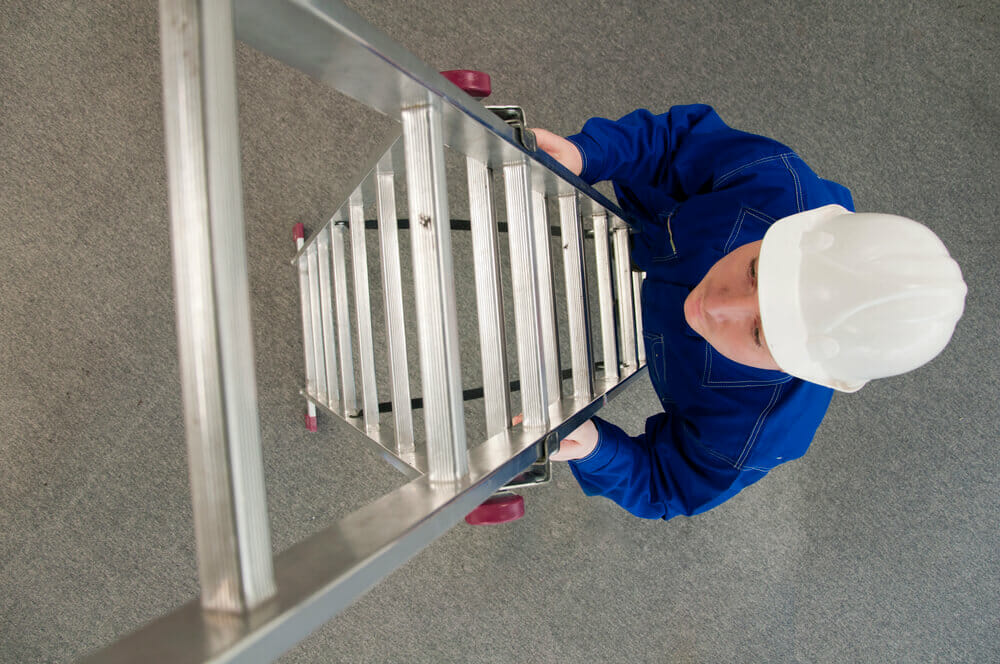Each year, around 50 roofers will suffer a fatal fall. In the construction industry, falls are responsible for about 40 percent of all work-related deaths. But, despite these sobering statistics, fall protection is the most violated health and safety standard according to the Occupational Safety and Health Administration.
In 90 percent of the fatal falls that occur, there was not a proper fall-protection plan in place. To stop these preventable accidents and protect from injury and liability lawsuits, it’s important that roofing companies stay up to date on OSHA regulations and that facilities take precautions to protect employees who will be working atop a roof.
Fall Protection Basics
Fall Exposure Risks—The first thing an employer should ask at a work site is if their workers are exposed to the risk of falling. OSHA defines fall exposure in the construction industry as any potential fall of more than 6 feet. Generally, fall exposure on rooftops occurs in five different ways:
- Roof Access—Many falls occur before anyone even reaches the roof on a ladder or on scaffolding.
- Roof Edge—A roof’s edge provides the most obvious danger for a fall and can send people down multiple stories to the ground.
- Obstacles and Openings—Many commercial roofs have skylights or vents that workers can mistakenly fall into.
- Roof Systems—Many commercial roofs will house important equipment like HVAC systems. Because workers often need access to this equipment, the area surrounding rooftop systems presents a high risk of fall exposure.
- Navigation—Rooftops with tricky obstacles or low visibility can pose a safety risk to workers.
Preventing Falls—OSHA requires that employers provide fall protection systems for their employees. This includes:
- Covering holes like skylights or other penetrations using a cover or railing
- Building guardrails and toe-boards near certain ledges and on lifts
- Creating warning systems for areas with a fall risk
- Providing fall restraint systems (like harnesses) when workers will be near edges
- Securing ladders and other equipment used to access a building’s roof
In some cases, OSHA also recommends the use of fall arrest systems, such as safety nets. In commercial roofing, personal fall arrest systems are also common. These systems use harnesses and some sort of shock-absorbing line to prevent workers from falling quickly to the ground.
Innovation In Fall Safety
Roofing is a constantly evolving industry, and new technology is finding its way into fall safety. While physical barriers, fall restraint, and arrest systems are critical for protecting people on a building’s roof, there is new emerging technology that helps make roofing even safer.
-
- Drone Inspections—The best way to prevent a fall is to keep people off the roof entirely. The use of imaging drones for inspections allows roofers to identify problems or create maintenance plans without ever putting themselves near a dangerous ledge.
Finding a Roofing Partner that Values Safety
No matter how safety-conscious a general contractor or facility manager may be, employees will be at risk if roofers don’t also value safety. It’s important that roofing companies work to protect their own workers while on the job and to install safety equipment on the roof to protect other workers in the future. Here are a few things to check for when vetting a roofing company’s safety regulations.
-
-
-
Does the roofer conduct a Job Hazard Analysis?
The first step in preventing a workplace accident is to conduct a Job Hazard Analysis (JHA). This includes a specific protocol for evaluating fall risks and creating a rooftop safety plan.
-
Does the roofer follow OSHA standards by providing railing systems, roof anchors, and penetrations?
OSHA lays out specific building requirements for roofs with skylights to prevent people from falling through them. The agency also requires railing systems for ladders and has specific requirements for roof anchors that can support workers in harnesses. A safety-conscious roofing company should be able to provide engineering and installation for each of these safety requirements.
-
Does the roofer consider HVAC worker safety?
Once a roof is built, HVAC workers will likely be the most frequent visitors to a building’s rooftop. Roofers who prioritize safety will recommend a guardrail to protect HVAC workers that will be near a roof’s edge.
-
Does the roofing company provide safety training to its employees?
All employees who are going to be working on a roof should receive some sort of safety training. Roofing companies that value safety will often participate in certification classes through OSHA. Another company safety program is the Certified Roofing Torch Applicator (CERTA) program, which teaches workers how to use roofing torches. Though not specifically designed to prevent falls, CERTA and other certifications show that a company cares about safety.
-
-
Maxwell Roofing & Sheet Metal, Inc. prioritizes safety as our highest concern. To learn more about how we help protect our employees and the importance of maintaining commercial rooftop safety compliance and fall protection, contact us today.

